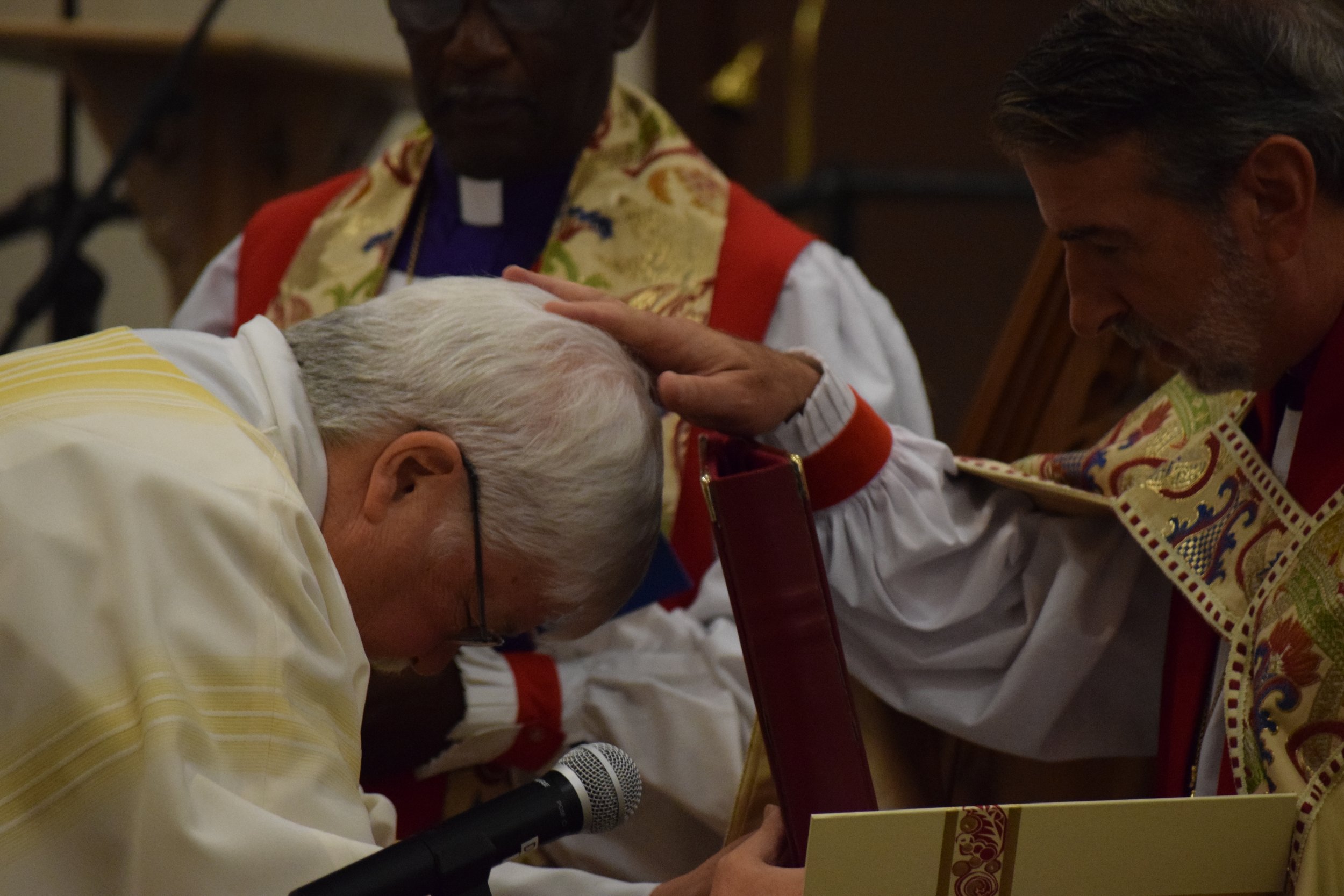
Our History
Our first bishop was a missionary on the frontier of Illinois, who worked to raise up missionary clergy. Mission has been in our DNA since day one.
The Early History of Anglicanism in North America
The Church came to the American shores with the early explorers, settlers,and colonists. With increasing numbers of English immigrants, the Church of England established itself in more places and with greater numbers continuously.
The tie was broken with the Church of England during the War for Independence, but the Episcopal Church resulted and grouped in the late 1700’s, alongside the Federal government, and along similar lines, i.e., a two-chamber legislature, a constitution, state boundary coterminous with a diocese.
The Apostolic Succession of Bishops came from the English and Scottish Churches. Bishop William White became the Prime Bishop, and by these numbers the Episcopal Church was assured the continuity of the Episcopate.
Anglicanism’s Arrival in Illinois
The next chapter in expansion of the Church came with the constant movement of people westward. First, over the mountains parallel to the eastern coast. Then, to the Northwest Territory, and to the south and west of the Louisiana Purchase.
Eventually, across the barrier of the Mississippi River — to Texas and the southwest, California, the Plains and the Northwest. Illinois was settled from the southern boundary northward.
The first organized Parish was Jacksonville; the second, Rushville. They, with Peoria, organized the Diocese of Illinois in 1835. Bishop Philander Chase, formerly of Ohio, was called as Bishop and located at Jubilee some 15 miles west of Peoria.
Bp. Chase was of a prominent New Hampshire family (a nephew, Salmon P. Chase, was Secretary of the Treasury under President Lincoln). He labored valiantly, founded a school, and established churches throughout Illinois.
Founding and Growth of the Diocese of Quincy
On October 11, 1877, at the General Convention meeting in Boston, the Diocese of Illinois was divided into three dioceses. Two were named after their cathedral cities: Quincy (the Cathedral was later moved to Peoria), and Springfield, while the third continued to be named the DIocese of Illinois. It was renamed the Diocese of Chicago some years later.
The Diocese of Quincy comprises the area between the Illinois and Mississippi Rivers and the southern boundaries of the Counties of Whiteside, and Lee, west of the western boundaries of LaSalle and Livingston, and even more recently, Woodford County was transferred from the Diocese of Chicago.
The major cities organized Parishes in the earliest years of the State’s history: Peoria, Quincy, Rock Island, Moline, and Galesburg. Less populous towns, if they had a fair-sized number of people of English background, often asked for ministrations of the Episcopal Church and missions were established in many of them — from Pittsfield and Griggsville in the southern area between the rivers to Macomb and Princeton farther north.
The coming of the railroads after the Civil War — and Illinois was covered with these — often determined the location of mission churches and the clergy who served them, i.e., Canton and Farmington as a good example.
The advent of the automobile and demographic factors changed all of this mission strategy. Towns in western Illinois have steadily declined in population since the Great Depression. Farms consolidated, railroad operations declined, highways increased, and the populace became mobile.
With industrialization the cities did grow, producing positive and negative factors. Newcomers were not necessarily Episcopalians. National groups (Germans, Swedes, East Europeans, etc.) mostly formed their own cultural institutions, and some of that survives to this day, i.e, Irish parishes, Belgian clubs, etc. Post World War II shifts resulted in larger Black and Hispanic numbers.
However, the early days of the Diocese emphasized education as a necessity for the pioneering newcomers. Bishop Chase established Jubilee College in a virtual wilderness, and it endured many years. the acreage and main buildings survive today as an Illinois State Park.
St. Mary’s School for Girls in Knoxville was a private “finishing” school of renown. A primary school was conducted at St. Paul’s Cathedral, Peoria, for many years in the 1950’s and 1960’s. Christian Education for all ages has always been a major endeavor in the Episcopal Church.
Bishop Alexander Burgess, Quincy I (the first Bishop of Quincy), lived in Quincy, as did Bishop Frederick William Taylor (Quincy II) and Bishop Edward Fawcett (Quincy III). Bishop Taylor had the shortest Episcopate — 2 years. Bishop Fawcett had the longest — 31 years. Bishop William Leopold Essex, the Fourth Bishop of Quincy (Quincy IV), Bishop Francis Lickfield (Quincy V), Bishop Donald James Parsons (Quincy VI), Bishop Edward Harding MacBurney (Quincy VII), and Bishop Keith Lynn Ackerman (Quincy VIII) all made Peoria the headquarters for the Diocese.
Each of these Bishops made significant contributions to the Church during their terms of office. All remained in office either until the end of their lives or until retirement. The first four Bishops died during their time in office. The fifth, sixth and seventh Bishops died in recent time, currently leaving the eighth Bishop enjoying his retirement.
Present Day
The Rt. Rev. Juan Alberto Morales, OSB, DD is currently serving as the Ninth Bishop of Quincy.
At the Diocesan Synod in 2008, the diocese voted a move within the Anglican Communion from the Province of the Episcopal Church to the province of the Southern Cone, a temporary move until the new province of the Anglican Church in North America was established.




